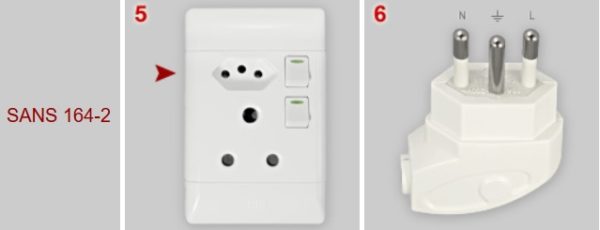A new plug that has been on the South African circuit since being introduced in the beginning of 2018 is now compulsory for all installations. Here’s the why, when and how of SA’s newest plug fittings.
Why ditch the old plug?
Since the 1950s our country has been using the familiar three-prong plug, which has often been connected with accidental fires and electrocutions.
This plug is a hazard for various reasons. For one, unlike most plug fittings around the world, its socket comes with an on-off switch, however, turning off the switch does not actually prevent electrocution. This creates a false sense of security and safety when it is off. Another hazard of the plug is that its pins are often without insulation, and users may touch these conductive parts when unplugging it.
On top of all this, the large holes of the plugs’ sockets have proven to be the perfect size for children to stick objects and their fingers in.

What’s good about the new plug?
The new SANS 164-2 plug also has three pins, one of which is an earth pin to protect users from electrical shocks. Residents will be happy to know that the new plug fitting is compatible with older two-pin plugs and certain products like cellphone chargers are not required to use this plug fitting so their plugs will remain unchanged.
The new outlets are able to take up to six plugs due to the few fittings’ slim design; the older three-pin plugs could only fit one or two per outlet.
The new fittings do not come with an on-off switch like the old ones and are much less of an electrocution hazard, with less live holes and smaller sockets that pencils and fingers cannot fit into.
The new fitting is also extremely cost effective, using five times less brass for the same, if not better, electricity-carrying ability.
Luckily for locals, only new plug fittings that are installed from this year onwards need to be updated, older fittings do not.
Contrary to popular belief, if you have an appliance that’s fitted with an older plug, you can cut the old plug off and fit a new one without losing your guarantee, according to the National Regulator for Compulsory Specifications (NRCS).
Pictures: Unsplash/www.plugsocketmuseum.nl
